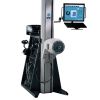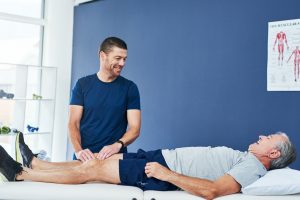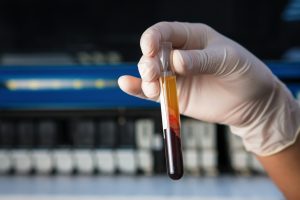
Bursitis Task Modifications and Strengthening Exercises
Treatment GuidelinesBursitis treatments are usually conservative. Task modification helps reduce irritation, which prevents the condition from worsening. Strengthening addresses weak muscles or tendons, instability, and poor mechanics.
Bursitis, or inflammation of the bursal sac, is a common condition in most therapy clinics. Most patients present with pain on or around a certain bursal sac (we have over 100 throughout the body). Let’s take a closer look at bursitis and learn how to diagnose, evaluate, and treat the condition with task modification and exercise.
What Is Bursitis?
Throughout the body, there are approximately 160 fluid-filled sacs, called bursa (plural, bursae). These sacs provide cushion between joints and reduce friction. Protecting the sac is a very thin membrane. Due to overuse, poor mechanics, pressure, or other underlying conditions, these membranes can become inflamed.
Inflammation is the ‘itis’ part in bursitis. The bursa swells with excess fluid, creating pain and tenderness in the area1. Pain typically increases with compression or tissue rubbing over that area. As the condition worsens, it can create sharp, disabling pain. Bursitis can lead to restricted joint movement and even bruising2.
A common example is trochanteric bursitis of the hip, where the IT band presses or rubs against the trochanteric bursa. This may present with pain while lying on the symptomatic side, running, or using the stairs.
Diagnosing Bursitis
Diagnosis of bursitis typically occurs when one or more of these diagnostic tests are positive, in addition to a detailed history. Listening for mechanism of injury is key, like repetitive stress or a sudden increase in activity. Pain during sleep, especially on one’s side, is also a very good indicator.
Before you determine bursitis as the diagnosis, it’s important to rule out other possible diagnoses. Other conditions which could present similarly are osteoarthritis of the hip, shoulder, rotator cuff inflammation, or tendinopathy of the hip abductor.
Typically, you can tell these apart with examination, provocation testing, or imaging. Imaging is especially helpful if the condition is not responding to treatment.
Evaluating Bursitis in the Clinic
Evaluation of bursitis includes provocation tests, muscle length testing, manual muscle testing, and palpation for tenderness. In addition to these provocation tests, we can look for changes in temperature or color around the bursal sac. Any heat, discoloration, or redness points to inflammation.
Treating Bursitis
Treating bursitis involves removing the irritant to reduce tissue swelling. Typically, treatment methods are conservative. In many cases, doctors recommend resting, using ice, and taking anti-inflammatory medications.
However, these options treat only the symptom. They do not address the root cause. To discover and correct the cause, clinical professionals can use a variety of techniques.
When treating bursitis, two factors play significant roles in calming the irritation: task modification and strengthening. Task modification will help reduce irritation, which prevents the condition from worsening. Strengthening is highly beneficial if muscle weakness, joint instability, poor mechanics, or weak tendons cause the injury. A combination of exercise and activity modification is usually the best course of action.
Task Modifications
Starting with task modification, this is a key step in treating any kind of inflammation. Under most circumstances, telling patients to completely stop all activities does them a disservice. The important thing to remember and communicate is, movement is medicine.
Begin by connecting with your patient and determining their goals. What do they enjoy doing? What are their hobbies? Are they having difficulties performing those activities? An important question to answer is how long they feel comfortable doing an activity before symptoms increase. Once you know which activities they enjoy doing, and how those have been impacted, you can begin to make modifications.
For example, let’s say the patient wants to get back to running three miles at a time; however, they feel an increase in knee pain after one mile. We can apply a task modification of breaking up this three-mile run into shorter one-mile segments, spread out throughout the day. This allows our patient to participate in the activity they love, while making it more manageable.
Changes like this require flexibility and changes to other parts of their day. If this is the case, discuss a thorough plan that works for their schedule. There are endless options for task modifications. The important key to remember is activity is OK, as long as we modify it to ensure our patients remain comfortable.
Therapeutic Exercises for Bursitis
Adding therapeutic exercises can help reduce the rubbing irritation causing the inflammatory response. Exercises ultimately need to strengthen the muscles above and below the affected joint. Take bursitis of the hip for example. Hip bridges that focus on hip flexors, glutes, hamstrings, and quadriceps will help alleviate stress and instability3.
With the shoulder, it’s best to focus on range of motion and stretching. This involves more than just focusing on the biceps and triceps. It is easy to forget that there are even more muscles in the shoulder girdle that can create injury that should be addressed as well4.
Muscle imbalances of the rotator cuff and lumbopelvic region are often contributing factors, so stretching and strengthening these regions is important. Each patient will present differently, so it’s important to remember a good examination can help you determine which muscles are affected.
Conclusion
Bursitis is a common condition which we all will likely treat at some point during our clinical work. Understanding the root cause will help determine a successful treatment plan for you and your patient. Task modifications allow your patient to continue doing the activities they love more comfortably and confidently. Combined with therapeutic exercises that address muscle imbalance and strengthen all phases of contraction, these interventions will help your patients live healthier lives.




